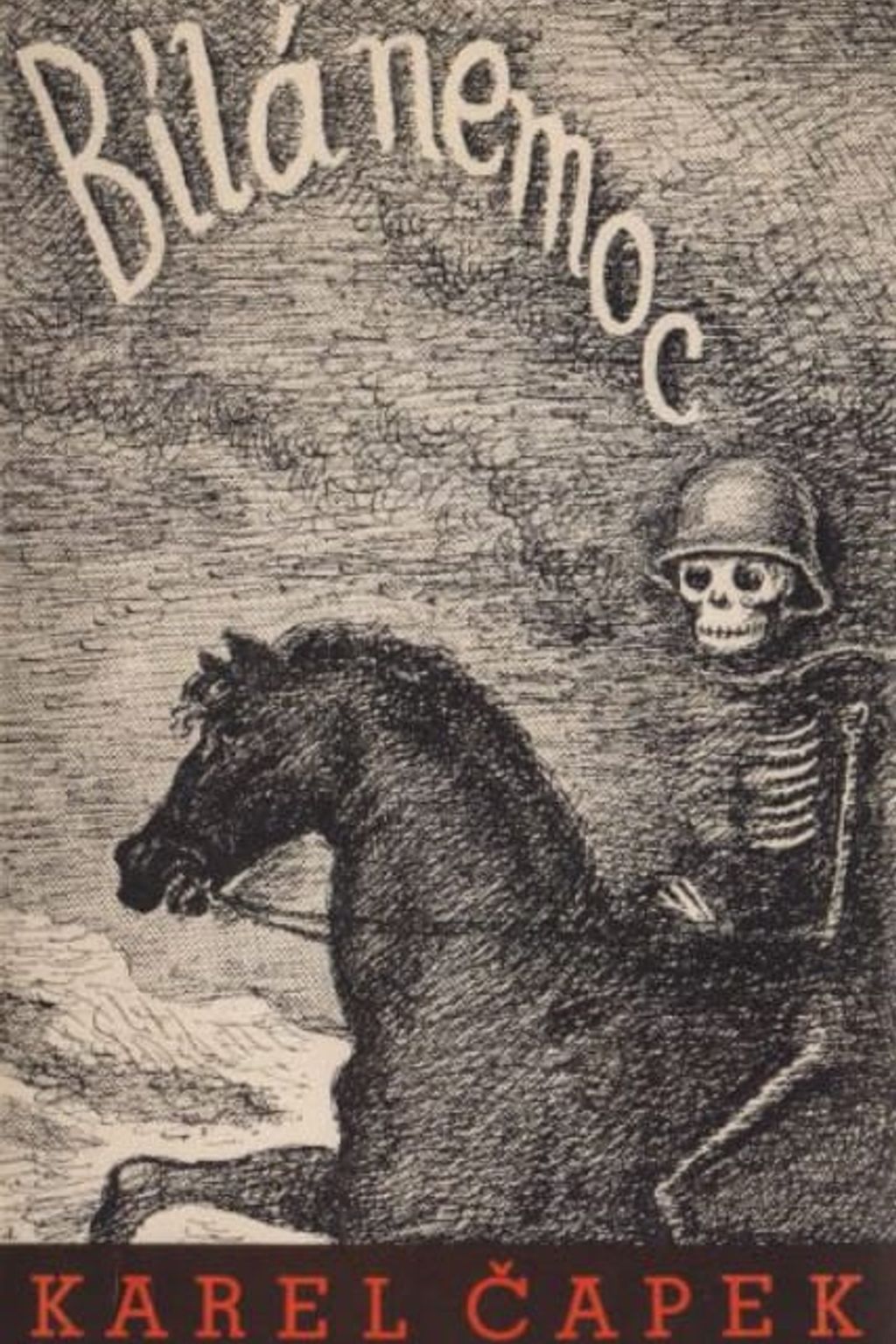
The White Plague 1937
The White Plague (Czech: Bílá nemoc) is a play written by Czech novelist Karel Čapek in 1937. Written at a time of increasing threat from Nazi Germany to Czechoslovakia, it portrays a human response to a tense, prewar situation in an unnamed country that greatly resembles Germany with one extra addition: an uncurable white disease, a form of leprosy, is selectively killing off people older than 45. It was adapted as the film Skeleton on Horseback by Hugo Haas.
Translations
The play was first translated into English by Paul Selver and Ralph Neale in 1938; Capek biographer Ivan Klíma calls the Selver/Neale translation “a seriously flawed adaptation”. Michael Henry Heim translated the play in 1988 for Crosscurrents: A Yearbook of Central European Culture. Peter Majer and Cathy Porter translated The White Disease for Methuen Drama in 1999.
Leprosy as symbol of moral, societal decay
“In various comments, Čapek emphasized that of course he could have chosen another disease, such as cancer, but that leprosy is so symbolic – of decay and disintegration. Those infected with the disease repulse everyone around them. So, they isolate them, hide them away so as not to see them or feel their presence; they isolate them in concentration camps.
“What’s more, we must realize that Čapek was the son of a doctor and that left a big mark on him. His father was, you could say, a spa doctor, but he was also a doctor for the poor, for miners and the like. So, all of this played a big role and perhaps was behind why he chose that motif.”
“The big question, of course, is whether Dr. Galén, a man who took the solemn Hippocratic Oath, at all has the right to withhold treatment. Many doctors later attacked Čapek for the play, saying it was a disgrace, an insult to their profession, and that, in fact, one would never act like Dr Galén.
“Karel Čapek writes directly that the play is about decline and decay, about where the ‘white race’ is heading. Because Europe really smelled of gunpowder at the time. War was looming. And he says, for God’s sake, civilized countries, civilized cultures are starting to treat each other in a completely crazy way! Where is the humanity. Where is democracy? Where is civilization?
“Čapek and his contemporaries had, of course, experienced a significant pandemic, the Spanish Flu. But here he is working on a more abstract level of a new disease coming from China that kills people over the age of forty.
“The ‘White Disease’, which takes a form of leprosy, is incurable. Classical science is completely in the dark, and basically doctors only know how to alleviate the pain and suppress the foul odour victims emit.
“And then appears the main protagonist, Dr Galén, the only one who can treat it. He questions what he has the right – or not – to ask of the powerful people in this world.”
In ‘The White Disease’, the first sign of infection is a white spot on the skin. Within weeks, the victim will die. Dr Galén discovers a cure but refuses to reveal what’s in his miracle serum unless the state’s fascist leader, the ‘Marshal’, ends preparations for a vainglorious war.
Until then, Dr Galén will only treat the poor – not the rich or powerful, who have the sway to stop the looming conflict. Meanwhile, some unscrupulous doctors supply bogus cures to the wealthy and politically connected. And young people see an opportunity to fill positions held by their dying elders.